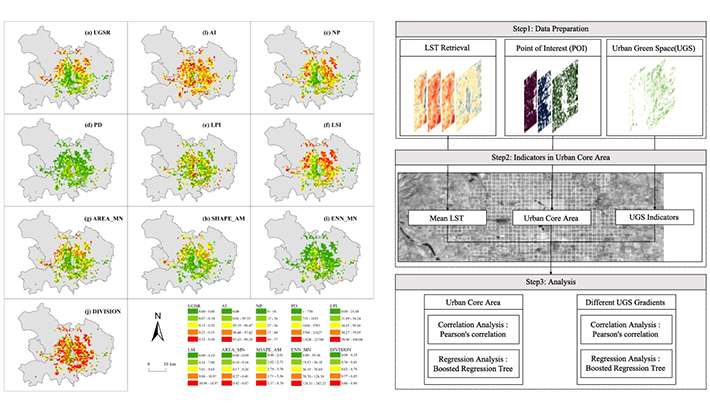Exploring the spatiotemporal impacts of urban green space patterns on the core area of urban heat island
发表期刊:Ecological Indicators
分区:SCI二区Top
影响因子:7
The key to managing urban heat island (UHI) is identifying and cooling the core areas of UHI. Studies have shown that spatial differences in urban green space (UGS) indicators have a significant impact on spatial differences in land surface temperature (LST). However, previous studies have mainly explored UGS and LST in the entire region, with few focusing on the urban core area. In this study, we extracted the urban core area based on the Point of Interest (POI) and kernel density methods. Correlation and regression analyses were then used to investigate the correlation between UGS indicators and seasonal LST in the urban core area. Our results confirm the significant cooling effect of UGS at the urban core scale. The effects of UGS landscape composition and configuration on LST varied across seasons and across urban green space ratio (UGSR) gradients. In the warm season, increasing the UGSR proved to be the most effective way to mitigate the urban thermal environment. In urban core areas where expanding UGS is not possible or in cores with high UGSR, designing UGS with complex shapes and clusters can better achieve the cooling effect. These results suggest that the influence of UGS landscape features on the urban surface thermal environment at the urban core area scale is very complex. Therefore, implementing urban greening to mitigate the UHI problem requires considering the premise of multifactorial analysis.


